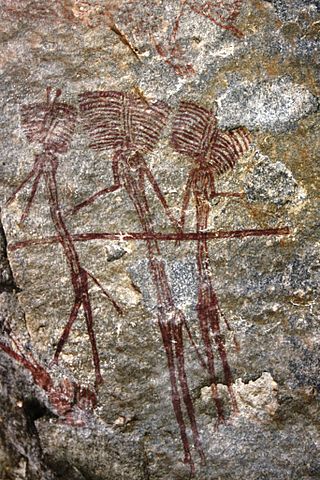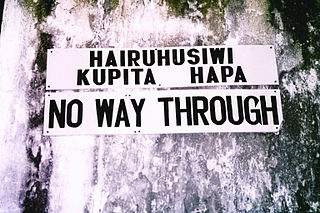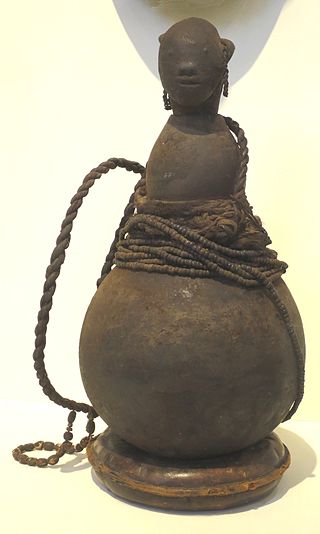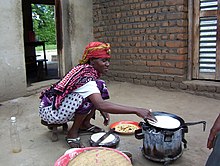
Swahili, also known by its local name Kiswahili, is a Bantu language spoken by the Swahili people, who are found primarily in Tanzania, Kenya and Mozambique.

The Abagusii are a Bantu ethnic group and nation indigenous to Kisii and Nyamira counties of former Nyanza, as well as parts of Kericho and Bomet counties of the former Rift Valley province of Kenya.

Dodoma Region is one of Tanzania's 31 administrative regions. The regional capital is the city of Dodoma. The region is located in central Tanzania, it is bordered by Singida Region to the west; Manyara Region to the north; Iringa Region to the south; and Morogoro Region to the east. Dodoma Region hosts the nation's capital city with where the legislative assembly or Bunge is based. Dodoma Region also hosts one of the largest University in Tanzania, University of Dodoma. The region is sole home of the Tanzanian wine industry, which is the second largest wine industry on the continent after South Africa. According to the 2022 national census, the region had a population of 3,085,625. 2012 national census, where by, 2012 had 2,083,588.
The Gogo also known as Gongwe(Wagogo, in Swahili) are a Bantu ethnic and linguistic group based in the Dodoma Region of central Tanzania. In 1992 the Gogo population was estimated to number 1,300,000..

The Turu are an ethnic and linguistic group based in the Singida Region of north-central Tanzania who speak Bantu language Kinyaturu. In 1993, the Turu population was estimated to number 556,000. The current population of the Turu is now over 1,000,000. They speak the Turu language.
The Alagwa are a Cushitic ethnic group mostly based in the Kondoa District of the Dodoma Region in central Tanzania, an area well known for rock art. Smaller numbers of Alagwa reside in the Hanang district of the Manyara Region in Tanzania, as well. They speak the Alagwa language as a mother tongue, which belongs to the South Cushitic branch of the Afro-Asiatic family. In 2022, the Alagwa population was estimated to number 52,816 individuals, and Mous (2016) estimates the number of speakers to be slightly over 10,000.
The Burunge or Burungi are a Cushitic ethnic group and among Iraqhw Communities based in the Chemba District of Dodoma Region in central Tanzania. They speak the Burunge language as a mother tongue, which belongs to the South Cushitic branch of the Afro-Asiatic family. In 2002, the Burunge population was estimated at 13,000 individuals.

The Kondoa Rock-Art Sites or Kondoa Irangi Rock Paintings are a series of ancient paintings on rockshelter walls in central Tanzania. The Kondoa region was declared a UNESCO World Heritage Site in 2006 because of its impressive collection of rock art. These sites were named national monuments in 1937 by the Tanzania Antiquities Department. The paintings are located approximately nine kilometres east of the main highway (T5) from Dodoma to Babati, about 20 km north of Kondoa town, in Kondoa District of Dodoma Region, Tanzania. The boundaries of the site are marked by concrete posts. The site is a registered National Historic Sites of Tanzania.
Burunge is an Afro-Asiatic language spoken in Tanzania in the Dodoma Region, by the Burunge people, a small community of about 13,000 native speakers that live in the Northeastern region of Tanzania. The Burunge belong to a cluster of Tanzanian groups known as Southern Cushites, which also categorizes Burunge as part of the South Cushitic language family. The Burunge live in close proximity to other languages such as the Rangi, Gogo and Sandawe, and ultimately, their language and culture is endangered by dwindling number of speakers and absorption by larger tribes.
Gorowa is a Cushitic language spoken in Tanzania in the Dodoma and Manyara Regions.

Kondoa is a town and administrative ward in the Kondoa District of the Dodoma Region of Tanzania.
Rangi or Langi is a Bantu language of spoken by the Rangi people of Kondoa District in the Dodoma Region of Central Tanzania. Whilst the language is known as Rangi in English and Kirangi in the dominant Swahili spoken throughout the African Great Lakes, the self-referent term is Kilaangi.

Tanzania is a multilingual country. There are many languages spoken in the country, none of which is spoken natively by a majority or a large plurality of the population. Swahili and English, the latter of which was inherited from colonial rule, are widely spoken as lingua francas. They serve as working languages in the country, with Swahili being the official national language. There are more speakers of Swahili than of English in Tanzania.

The Bantu peoples are an ethnolinguistic grouping of approximately 400 distinct native African ethnic groups who speak Bantu languages. The languages are native to 24 countries spread over a vast area from Central Africa to Southeast Africa and into Southern Africa. There are several hundred Bantu languages. Depending on the definition of "language" or "dialect", it is estimated that there are between 440 and 680 distinct languages. The total number of speakers is in the hundreds of millions, ranging at roughly 350 million in the mid-2010s. About 60 million speakers (2015), divided into some 200 ethnic or tribal groups, are found in the Democratic Republic of the Congo alone.

The Meru, also known as the Va-Rwa, are a Bantu ethnic group native to the slopes of Mount Meru in Arusha Region. The Meru people share the same name with the Meru people of Kenya, but they are completely different ethnic groups each with their own unique history and identity.

Mathias E. Mnyampala (1917–1969) was a Tanzanian writer, lawyer, and poet. Mnyampala was born on 18 November according to a personal record form of 1956, but he wrote in his autobiography that he only knew the year with accuracy. He was born in the hamlet of Muntundya depending on the village of Ihumwa in Chamwino District in Dodoma region at the time part of German East Africa. He died on 8 June 1969 in Dodoma city, Tanzania. Mnyampala wrote in Swahili, the lingua franca of East Africa, not Cigogo, the native language of his ethnic group.
The Bahi Rock-Art Sites or Bahi rock paintings are rock art located at three sites in the Dodoma region of Tanzania. These white paintings are believed to be products of the Wamia people, who occupied the region before the Wagogo people. The paintings, which depict cattle, human figures, stools, gourds, a bird, and an arrow, among other symbols, were supposedly executed during important occasions such as funerals. The Wagogo people, though not fully aware of the original significance of the paintings to the Wamia, have continued to use the sites as sacred locations for rain-making ceremonies. The Bahi paintings are estimated to be at least 340 years old based on the genealogy of the Bahi chief in 1929, which revealed the estimated time of his ancestor Kimanchambogo's arrival in the area. The white painting method is generally associated with Bantu-speaking farming populations.

National Historic Sites of Tanzania is an official list of places in Tanzania that have been designated as National Historic Sites as per the Ministry of Natural Resources and Tourism of Tanzania under the Antiquities Division. The list is not complete and is currently being updated.

The Mbugu people, also known as the Va'maa, Ma'a are an ethnic Bantu and linguistic group hailing from western Usambara Mountains of Lushoto District in Tanga Region of Tanzania. Tanzania's Mbugu language is one of the few true hybrid languages, combining Bantu grammar with Cushitic lexicon. In actuality, the people speak two languages: one mixed and the other Pare, which is closely linked to the Bantu language. They are estimated to be around 60,000 Mbugu people left.












